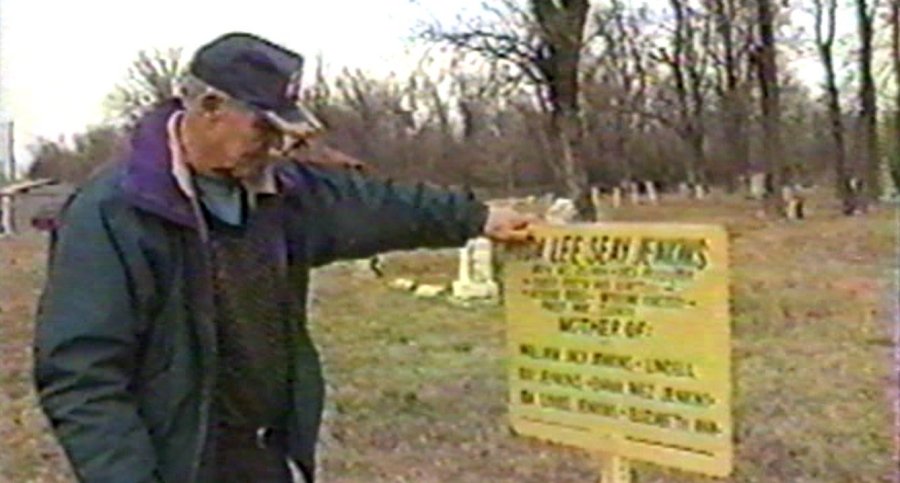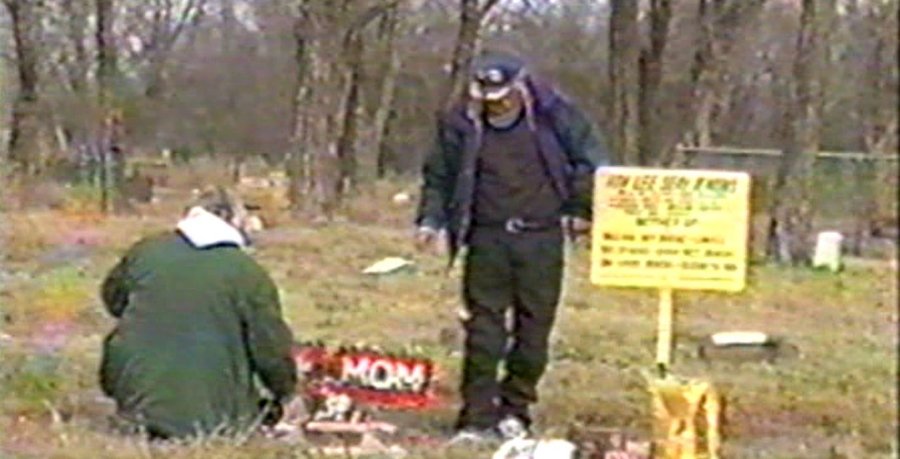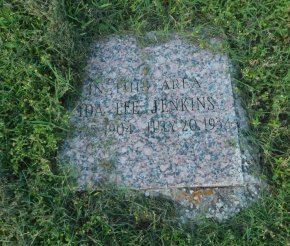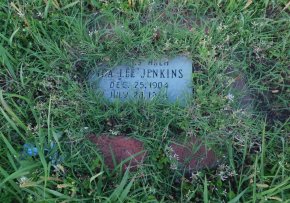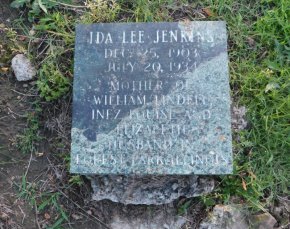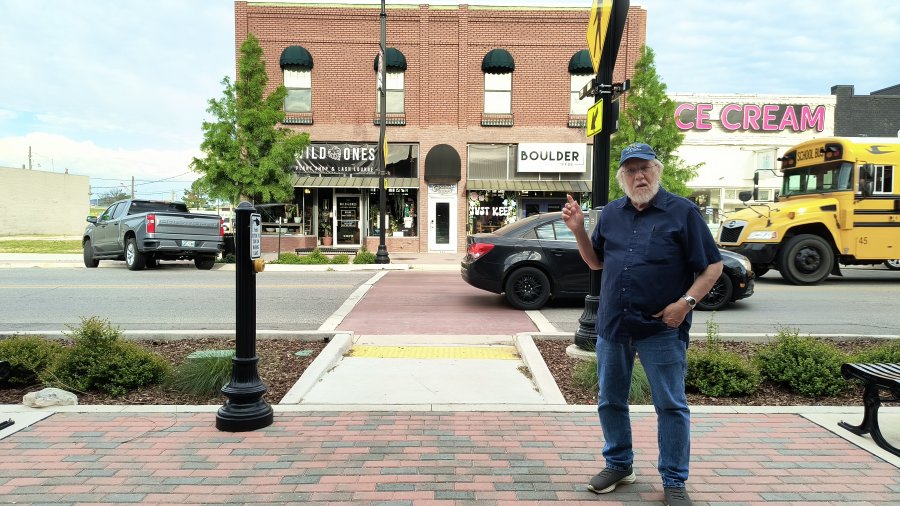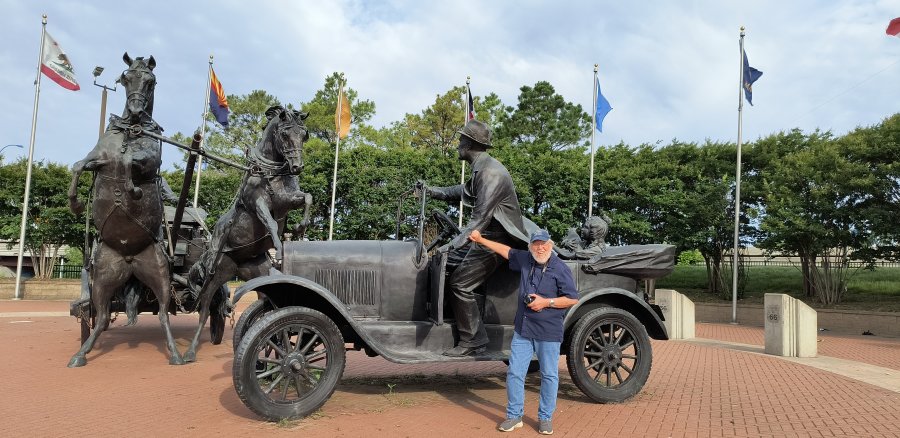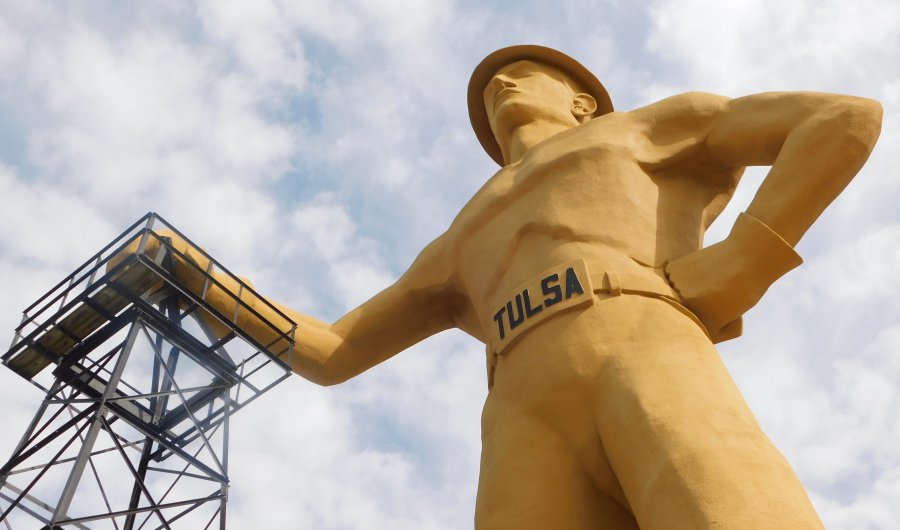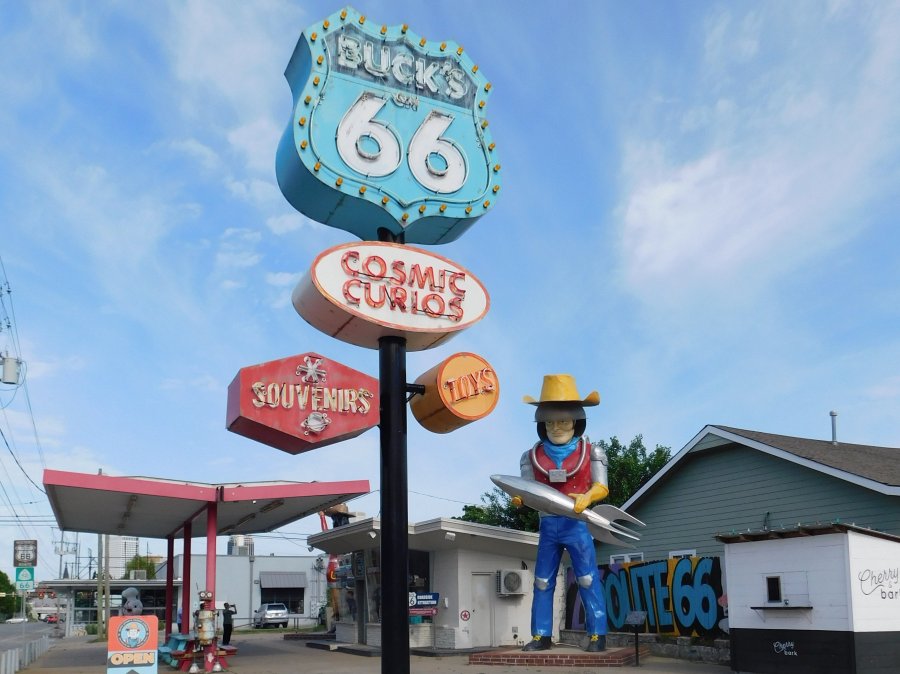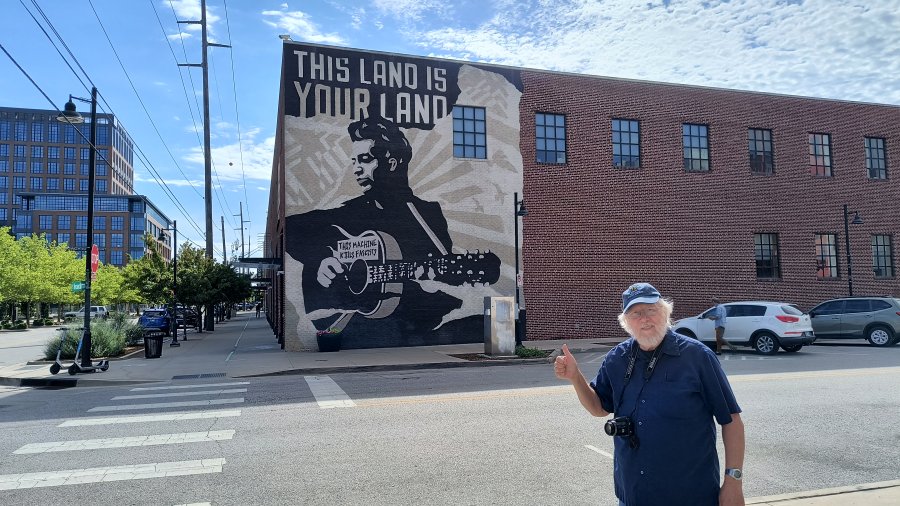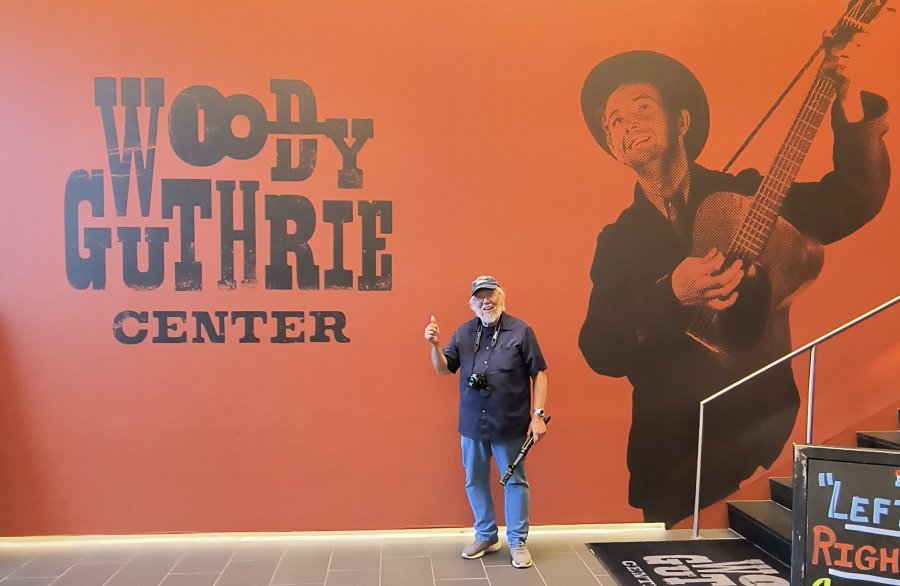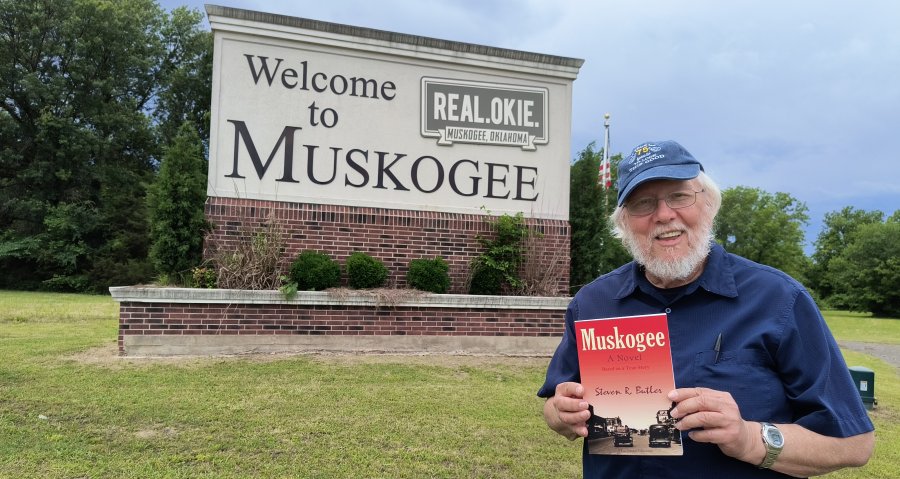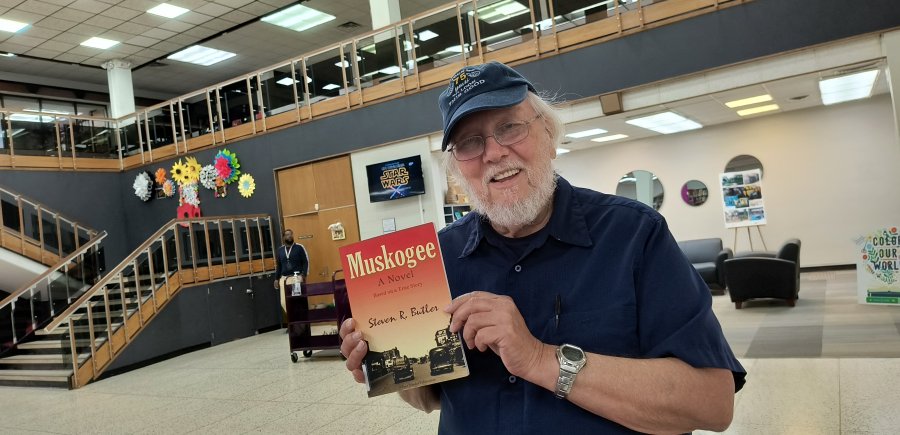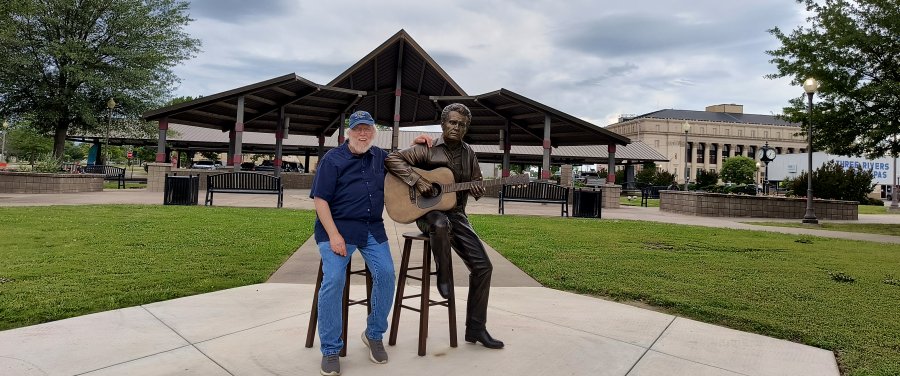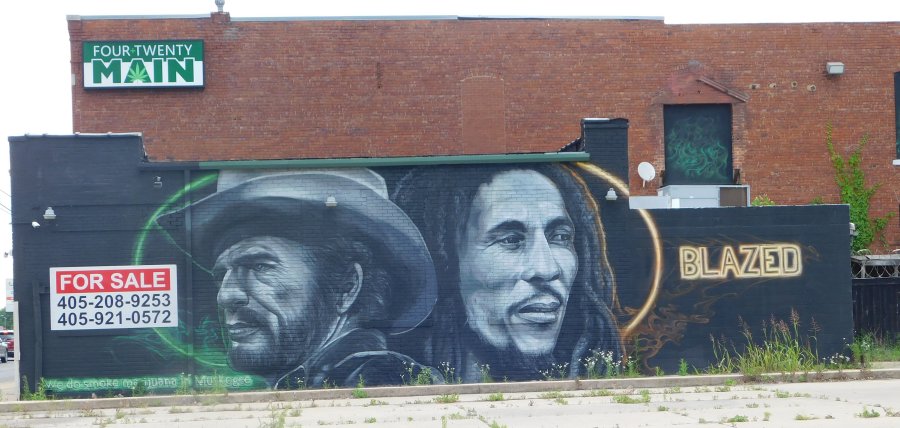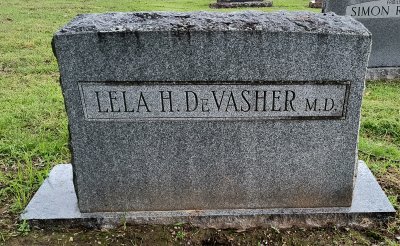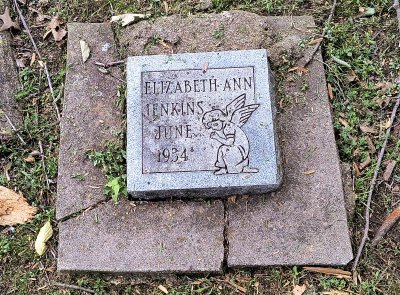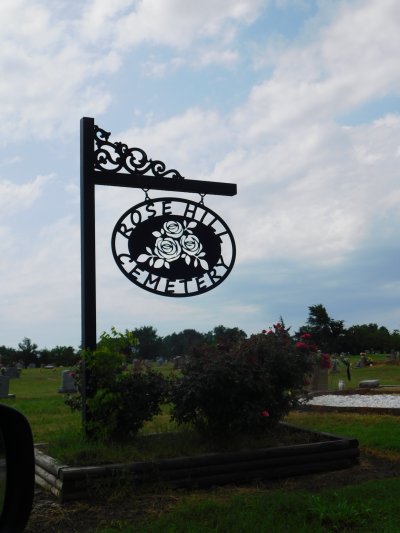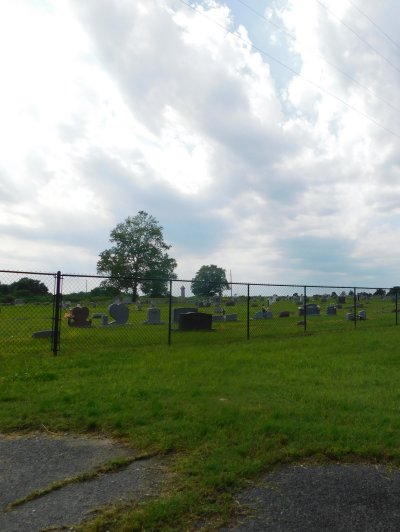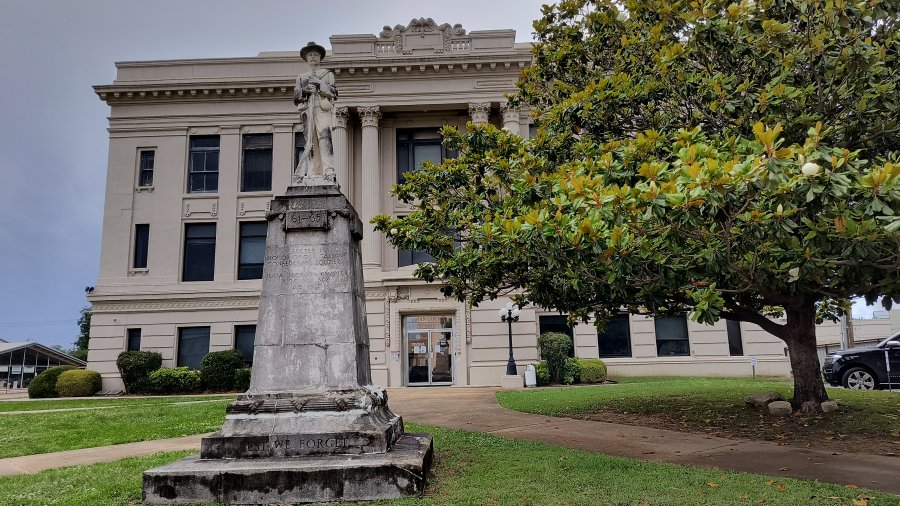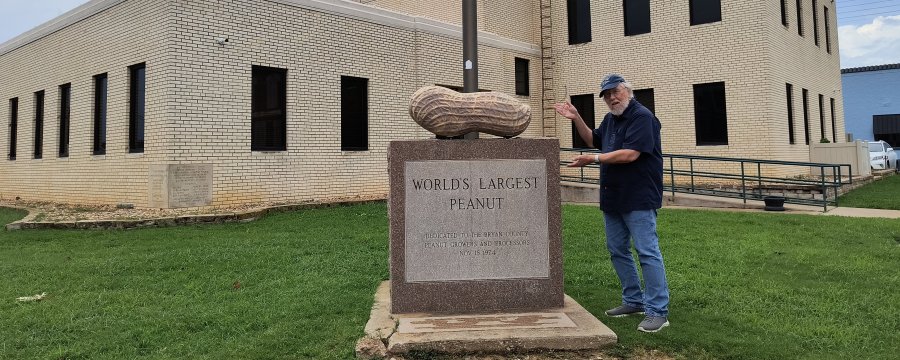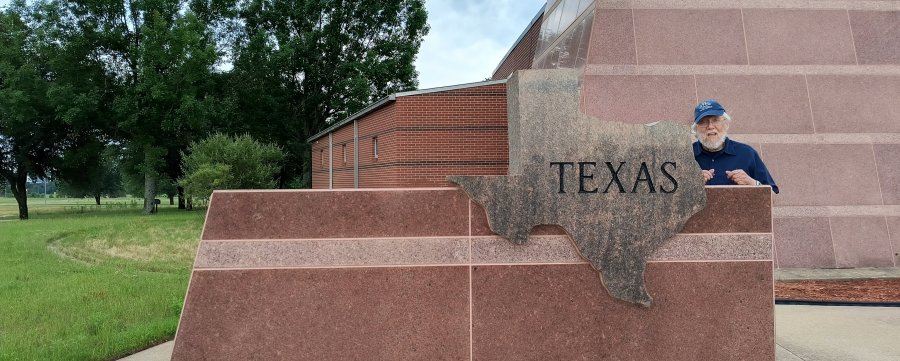Return to: Special Features
|
MY FAMILY IN OKLAHOMA Father's side (where they came from, year or approximate year they came to Texas, and the Texas counties where they lived)
Mother's side (where they came from, year or approximate year they came to Oklahoma, and the Oklahoma counties where they lived)
Some of the other descendants of those families--my distant cousins--live in Oklahoma to this day. GETTING TO KNOW MY OKLAHOMA ANCESTORS
I've also visited Oklahoma several times when family history was not the motivating factor. In 2006, for example, I visited the Wichita Mountains National Wildlife Refuge, and again in 2007 and 2019. The first two times, I and members of my family camped together overnight. Back in 1985, we also camped at Beaver Bend State Park, in the foothills of the Oauchita Mountains. Notice I wrote "Mountains" twice. That's something that takes a lot of folks by surprise, I think, that Oklahoma has mountains. They are not the Alps, or the Rockies, or even the Appalachians in size, but they are mountains all the same, and eastern Oklahoma, which is where I traveled on this most recent road trip, has lots and lots of verdant green hills of a substantial size. In short, it's not just a place where "the wind comes sweeping down the Plains." Years ago, so long ago that I forget exactly when, I conceived the idea of making a family history tour of Eastern Oklahoma, to visit, and in some cases, re-visit, all the places that I know of which are associated with the five Oklahoma families from whom I'm descended, all at the same time, so to speak, over a two or three-day period. I thought at the same time, I could visit some places along the way that appeal to be from a cultural perspective. I chose to leave on Wednesday, May 21, 2025, for three reasons: First, because the weather forecast for that day was sunny, mild, and rain-free, and the next day, Thursday, May 22, was forecast to also be mild and partly cloudy, but no rain. As it happened, I did encounter a little rain on the way home on Thursday, but nothing heavy, thank goodness! The second reason I went was because I wanted to beat the upcoming Memorial Day weekend traffic, which I did. Traffic, by an large, on this trip, was not too bad. The third reason was because I found, from a news report, that there was a Woody Guthrie museum in Tulsa, and being a big Woody Guthrie fan, I wanted to see it. I didn't realize, until I got there, that it was established ten years ago. If I had known, I would have made the trip sooner (SOONER, get it?). Thankfully, the trip went more or less as planned. The only real difficulty I encountered was getting slightly lost for about a hour or so between Wilburton and Muskogee (but I eventually managed to find the right route) and not being able to get a hotel room in Muskogee, which led me to have to drive, at night, up to Tulsa--but that was a blessing in disguise. The hotel in Tulsa was comfortable and cheaper than it would have been in Muscogee. Since returning home, I've made this website for the additional purpose of sharing with YOU what I saw and learned and experienced on my trip! I hope you both enjoy it and learn from it! SOME TRIP STATISTICS: Miles traveled: 791. Counties visited: Six (Choctaw, Latimer, Muskogee, Tulsa, Johnston, Bryan) Additonal counties drove through: Seven (Pushmataha, Haskell, Sequoyah, Wagoner, McIntosh, Pittsburg, Atoka)
TOUR ITINERARY
You can also take a look at this MAP of MY TRIP to see the route I took. Grant, Choctaw County, Oklahoma Sometime after 1911, but before 1918, my great-great-grandparents, Isaac F. and Ada Ann Morrison, moved from Lamar County, Texas to Choctaw County, Oklahoma, just across the Red River from Lamar County, Texas. They settled in or near the tiny town of Grant, which is a few miles south of Hugo, the seat of Choctaw County. It was here, in 1918, that Isaac died and was buried in Grant Cemetery. Unfortunately, there does not appear to be a tombstone or marker of any kind on his grave. Consequently, his precise place of burial has been lost to history. But I visited the cemetery anyway, just to see it and photograph it. I am thinking of ordering a VA grave marker for him, and having it placed somewhere in the cemetery. During the Civil War, he served in the Kentucky Capital Guards, a Union unit.
Hugo, Choctaw County, Oklahoma My next stop was Hugo, just a few miles north of Grant. On the way, I stopped at Shoat Springs Cemetery, to pay my respects at the grave of my first cousin, Martha Butler Herndon, who died in 2009, less than two years after I saw her and her husband, Junior, at my father's 80th birthday party in Texas. From there, I went on in to Hugo, where I photographed the Choctaw County Courthouse that my building contractor great-grandfather, Matthew E. Seay apparently had a hand in building in 1911-1912. He also helped build the jail. For a while, I assumed my great-grandfather was the contractor for both buildings, thanks to reports in two Oklahoma newspapers (the Wilburton News and the Southwestern Building News), but according to the courthouse cornerstone and a plaque inside, the architects were a firm called Hair and Tonini, and the contractors were Dick Donathan & Claud O. Moore, so it looks like he was merely one of the workers. It's likely however, that he got the work as a result of his earlier partnership with Moore, in Wilburton, in 1904. Hugo was also the home of the Seay family for a while, when eastern Oklahoma was known as Indian Territory. My maternal grandmother, Ida Lee Seay, was born in Hugo on Christmas Day 1903. Six months later, the family moved to Wilburton. While I was in Hugo, I also took some photos in the old "downtown" section, in the apparently nameless park adjacent to the old train depot, and also around the depot itself, which was built in 1914. If my great-grandfather Seay had a hand in its building, however, I'm unaware of it.
If you are curious, here is why Hugo is called "Circus City, USA."
Wilburton, Latimer County, Oklahoma Wilburton (pronounced "Wilbur-ton," not "Wil-Burton")is the seat of Latimer County. It was founded back when eastern Oklahoma was still "Indian Territory" and white people could only rent, not own real estate. All that changed with statehood, of course, in 1907. The M. E. Seay family lived here from June 1904, when my grandmother, Ida, was only six months old, until about 1914, when she was ten. In short, she spent a little more than half of her childhood in Wilburton. A little more than a century later, the town is not much larger in either land size or population than it was when the Seay family lived there. The population in 1910 (which included my grandmother, her siblings, and her parents) was 2,277. The population in 2020 was 2,285, only 8 people more than in 1910! During its early years, the same years when the Seay family lived here, Wilburton was on a boom, thanks to the nearby coal fields and the mining college. Clearly, my great-grandfather, a carpenter and building contractor by trade, saw Wilburton as a place where he could make a good living, and apparently, he did, at least for a while. But those days are long gone. Downtown Wilburton was pretty quiet when I arrived in mid-afternoon. I was one of the very few people out walking on what was a nice, mild, sunny spring day. It didn't take long to stroll through the central business district, only two or three blocks in length. Along the way, I took photos of buildings that were constructed during the time the Seay family lived there, including the historic Rosenstein Building and the old bank building at the corner of Main Street and what used to be College Street, now First Street. These are structures that would have been familiar to my grandmother and her family. During the ten years or so that the Seay family lived in Wilburton, my great-grandfather, M. E. Seay, built one church, one elementary school, and at least six houses. Those are just the jobs that were reported in the local paper. Who knows how many weren't. He also traveled to other communities, sometimes as far as Ardmore or Oklahoma City, to build something. Interestingly, he never bought any property himself while living in Wilburton. The Seay family lived in a rented house somewhere in the far northwestern section of the city, near the present-day high school.
From Wilburton, I made my way north to my next stop, the Cookson Hills just east of Muscogee. Along the way, I drove across an old iron bridge just east of Wilburton--a bridge that might have been made by the Muskogee Iron Works--the place where my grandfather Jenkins worked for a decade or more--and I also saw a big hawk take off and fly right across the road, as I was coming along the road, with a big, long snake in its talons! When the snake, which was dangling, hit a fence the hawk flew over, it was knocked loose from the hawk's talons and fell to the ground, where it slithered away into the tall grass as fast as it could go. Unfortunately, it all happened too fast and unexpectedly for me to get any photos or video!
Shortly after that, I stopped briefly, to take a photo by the sign announcing the entrance to Robbers Cave State Park. I didn't stop long though, or hike to the cave, because I was by myself and didn't feel safe hiking alone, in the spring, in a forest that might be infested with snakes! And also because I was on a tight schedule, having promised my wife I'd be home in Texas by the following evening.
Apart from getting a little lost for awhile, between Wilburton and the entrance to Robbers Cave, and then later, on my way to the Cookson Hills, where I missed my turn and had to backtrack, the drive through the verdant green hills of Eastern Oklahoma was enjoyable. There wasn't much traffic, but I couldn't go very fast because the road through the hills was twisting and winding, with lots of hairpin, or almost hairpin, turns and sometimes with drop-offs on the right-hand side with no guard rails! So, I had to pay close attention to the road.
Cookson, Sequoyah County, Oklahoma The reason I decided to go see the Cookson Hills was because only a few days before I left Texas, I read an old newspaper report about something I had never heard of before--how my Uncle Jack Jenkins (my mother's oldest brother) had made a 652-mile long bicycle trip, at the age of 16, with two of his buddies, from Dallas to the Cookson Hills and Muskogee, in 1938! At the time, Uncle Jack had a job as telegram delivery boy in downtown Dallas, and so did the other boys, so I guess they were used to some hard pedaling, but that is a long way to go on a bicycle, especially up and down the hills of Eastern Oklahoma! Anyway, I admired Uncle Jack for having done that, so I decided to retrace his route to the Cookson Store, where, according to the newspaper report, he and his buddies, went so that they could get a cold drink presumably, maybe something to eat, and admire the view of the tall cliffs on the other side of the Illinois River, which runs, or ran, through the middle of the Cookson Hills. Trouble is, in 1952 or thereabouts, they dammed up the river to create a huge reservoir called Lake Tenkiller, so the site of the original Cookson store is now under water, and the cliffs, while still tall, are partly under about 90 feet of water. But I went to the new Cookson store, where I told the story about Uncle Jack to the lady behind the cash register, and then drove down to Cookson Bend to look at the cliffs and take some photos, before hitting the road for Muskogee. Unfortunately, it was late in the day, so the very bright sun was low in the sky, which made it difficult to take a good photo of the cliffs. It would have been better to see them in the morning, when the sunlight would have illuminated them. Instead, they were in shadow. Oh well!
Muskogee, Muskogee County, Oklahoma
I arrived at my destination, Frozen Rock Cemetery, on the east side of Muskogee, near the Arkansas River, just before sunset. There was still enough daylight though, to take some photos of the three grave markers my Uncle Lindell Jenkins (my mother's other brother) had left there over the years between his retirement in the late 1960s and his death in 2000. I had been there before, possibly as early as 1953 or '54, when my parents, grandfather and I had driven up to Muskogee from Dallas, to visit "Grandma Jenkins," my grandfather's stepmother, who was a widow then. If we did visit Frozen Rock during that trip, I don't remember it. The first time I remember visiting Frozen Rock was when my father and I stopped in Muskogee on the way to my mother's funeral in Illinois. That was in 1995. We also drove by the site of the house on Monta Street where my mother had been born in 1930. There, and at the cemetery, I scooped up a little earth and carried it with me to my mother's graveside service, and after my brother had places her ashes in the shallow grave next to my stepfather's grave, I poured the earth from Oklahoma on top of the urn. The next time I went to Frozen Rock was in late December 1998, sometime between Christmas and New Year's Eve, this time with Uncle Lindell and his daughter, my cousin Kathleen. Uncle Lindell had acquired some heavy, dark red paving bricks when a street in Houston (where he lived) was being repaired. He wanted to place them around the smallest of the three markers he had placed in the cemetery to honor the memory of his mother. I helped him do that. (See photos below.) Trouble is, Lindell did not know exactly where his mother was laid to rest. He was only 9 years old when his mother died and couldn't remember the exact spot. So, chances are, one of the three markers is on the right spot. Or none of them are. On this occasion, he also erected a metal sign with our grandmother's name and the names of all her children. It was still there, though weather-worn, when I revisted Frozen Rock, with my oldest son, in 2004, and again in 2010, when I went there with my father, brother, and sister-in-law, though by that time the sign was nearly illegible and was lying on the ground. When I made my next visit, in 2019, with my youngest son, the metal sign was gone.
ABOVE: The three markers Lindell placed in Frozen Rock Cemetery in memory of his mother, my grandmother, Ida Seay Jenkins, as I found them in May 2025, during my sixth (possibly seventh) visit. The sun was setting as I left Frozen Rock and headed for the El Charro Mexican Restaurant where I planned to have dinner while using my mobile phone to find a hotel room for the night. Although I got the meal I wanted--chicken tacos with rice and beans--I couldn't find an affordable hotel in Muskogee that wasn't fully booked, so I drove another hour to Tulsa, where I checked into a Comfort Suites. Sand Springs, Tulsa County, Oklahoma Sand Springs, a few miles west of Tulsa, is the only spot I visited in Tulsa County that has a family connection. In 1930, my great-grandfather, M. E. Seay, was living in a two-story red brick apartment building, with his second wife, Lena, in downtown Sand Springs. I don't know for sure, but I'm guessing that he was there on a building job of some kind. In any event, the apartment building is still there, so I wanted to go see it, and I did, and here is a photo of it!
Tulsa, Tulsa County, Oklahoma After visiting Sand Springs first thing in the morning after I checked out of my hotel in Tulsa, I returned to Tulsa to take photos of some of the unusual public art in Tulsa. These included the Route 66 Memorial in Cyrus Avery Place, the Golden Driller statue, and the Buck Atom statue and Route 66 Souvenir Shop, which also featured a few other interesting statues.
After this, I headed for the Woody Guthrie Center in Tulsa's Arts District, which I had only recently heard about despite the fact that it's been there ten years! I am a big Woody Guthrie fan, and have been for years, so I just had to see it, and I did, and I enjoyed my visit very much. And then, I went next door and toured the Bob Dylan Center, which celebrates the life and career of Bob Dylan, who at age 83, is still touring and performing this spring and summer (2025).
Muskogee, Muskogee County, Oklahoma (again) After touring the Guthrie and Dylan centers and taking a short walk around Guthrie Green while waiting for them to open at 10 a.m., around noon I headed back to Muskogee, because I had some unfinished business there. My first stop was a big Muskogee welcome sign alongside Highway 69, where I posed with a copy of my novel, Muskogee, which is mainly about my grandmother Jenkins' life (and untimely death) in Muskogee in the 1920s and '30s. (See Google Maps street view). Next, I went to the Muskogee Public Library (See Google Maps street view), where the librarians were delighted when I offered to autograph my novel, a copy of which I sent them back in 2021, right after it was published. And I was also delighted to be able to do that!
My next stop was, just for fun, the Merle Haggard Statue outside the Muskogee Civic Center. In the late 1960s, Haggard, a Country and Western singer, had a big hit with a song called "Okie from Muskogee," which touted Muskogee as "a place where even Squares can have a ball!" Next, I went down a few blocks to take a photo of a ironic mural featuring Merle and Bob Marley, painted on the wall of a medicinal marijuana shop. One of the lines in Merle's song was about how they didn't smoke pot in Muskogee, but now they do! (By prescription only though.) Bob Marley, in contrast, was well known to smoke "Ganja" a lot.
I also drove through Spaulding Park, which features in my book, Muskogee, and the site of the Boulevard Christian Church that my grandmother attended (and presumably other members of the Jenkins family), as well as the site of the funeral home where her funeral was held in 1934, which is now a vacant lot. My last stop, just as it started to rain a little, was Greenhill Cemetery, where my baby aunt, Elizabeth Ann Jenkins, is buried, and also the quack doctor, Lela DeVasher "M.D.", who was responsible for my grandmother's premature demise at age 30.
Wapanucka, Johnston County, Oklahoma After leaving Muskogee, I drove south on Highway 69 toward Atoka, where I turned right on to the road to Wapauncka, 17 miles away. I went there because in 1895, my great-great-great-grandfather John I. Williams and his second wife, Sciotha, had moved to that area from their longtime home in Hunt County, Texas. At the time they made the move, John was in his 70s, which seems to me to be an odd time in life to just pick up and move to another state. At least one of John's children, Parsetta, who was married to a man named Baker, also moved to Wapanucka, so maybe John and Sciotha went there to be near Parsetta's family? At that time, that part of Oklahoma was still known as Indian Territory. (Statehood did not come until 1907.) Parsetta Williams Baker, sister to my great-great-grandmother, Louisa Williams Jenkins, died in 1905 and was buried at Wapauncka's Rose Hill Cemetery, just a few miles up the road from Wapanucka, which today is not much of a town (very run down looking). Her father, John I. Williams, died the following year, and I suspect that he was also buried at Rose Hill. Trouble is, I don't know for sure, because he has no tombstone or grave marker of any kind, but where else would they put him? So, I wanted to see Rose Hill Cemetery for myself. Unfortunately, it's a fairly large, crowded cemetery, and no office, and I was pressed for time because I promised my wife I'd be home by dark, so I didn't get out and look around, just took some photos and left.
Durant, Bryan County, Oklahoma Durant, the county seat of Bryan County, is located only a few miles above the Red River, which separates Texas from Oklahoma. Today, Durant is known for its huge Choctaw Casino and adjoining hotels, just off Highway 69/75, a place my father used to enjoy visiting, from time-to-time, with his girlfriend, Deloris, and his nephew, Milton Vance. Durant used to be known too as the place where North Texas couples could go and get married quickly because there was no "cooling off" period after obtaining a marriage license, as there was in Texas. Most couples, to the best of my knowledge, got married by a judge or justice-of-the-peace, right there in the courthouse after obtaining their marriage license, or in a JP's office nearby. In any event, this is the place where two of my friends were married in 1970, where my Aunt Ruth Butler was married in 1933, and my mother and her second husband, Bill Victory, were married in September 1955. Interestingly, the courthouse was more or less as I had imagined (I was seeing it for the first time), but the setting was different. I had imagined it in the middle of a traditional courthouse square, surrounded by businesses on all four sides, like most of the small town courthouses I've seen. It isn't. I was also surprised to see "The World's Largest Peanut" on a pedestal outside the Durant City Hall. If you want to know why it is there, read this.
Back in Texas! And so, from Durant I headed south on Highway 69/75 and in a few moments, I crossed the Red River and was back in Texas again! I immediately stopped at the Texas Welcome Center at the first exit, to use the facilities, and take the below photo. Less than two hours later, I was home, before dark, just as I promised, and having done or seen about 90 percent of the things I had wanted to do or see on my trip to Oklahoma. The next family history-themed road trip I'm planning is much longer and more ambitious, but I'll wait to tell you about that in the "News and Views" section of this website. Stay tuned!
This website copyright © 1996-2025 by Steven R. Butler, Ph.D. All rights reserved. |

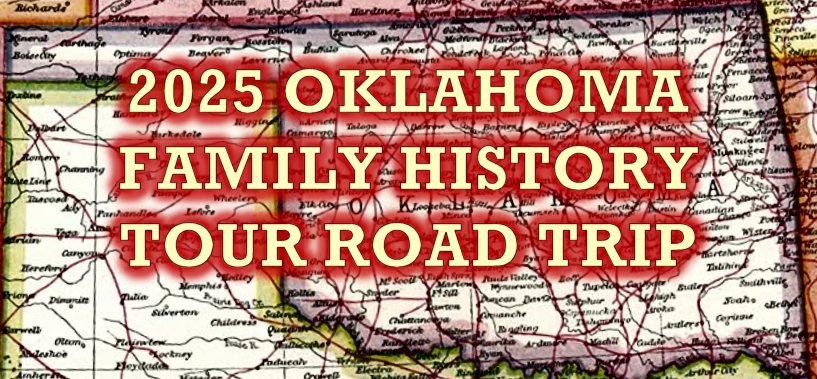
 On Wednesday, May 21, 2025, from my home near Dallas, I embarked on a 791 miles-long road trip for the purpose of visiting several sites in Eastern Oklahoma which are associated with my family history. I had visited some of these places in the past, at least once, but in others cases, it was for the very first time.
On Wednesday, May 21, 2025, from my home near Dallas, I embarked on a 791 miles-long road trip for the purpose of visiting several sites in Eastern Oklahoma which are associated with my family history. I had visited some of these places in the past, at least once, but in others cases, it was for the very first time.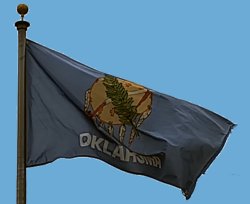 WHY DID I TAKE THIS TRIP?
WHY DID I TAKE THIS TRIP?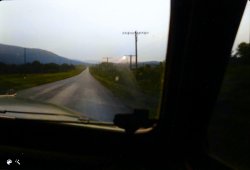 One place I've visited multiple times is Muskogee, Oklahoma. The first time was in 1953 or '54, in company with my mother and my father and my maternal grandfather (my mother's father). I was only three or four years old at the time. The reason for our trip was to visit my step-great-grandmother (my great-grandfather Jenkins' second wife and my grandfather's stepmother), who had gone to live in Muskogee with her brother's family after her husband had died in Dallas, Texas in 1946. On the way home, we stopped in Arkansas to visit Mount Magazine State Park, where a lot of photos were made. However, my only clear memory of that trip is looking out of the back window of my father's 1949 Plymouth, and watching the clouds of red dust behind us, that were churned up by the wheels of the car on a dirt road. The colorized photo seen here is proof that I also looked out the front window.
One place I've visited multiple times is Muskogee, Oklahoma. The first time was in 1953 or '54, in company with my mother and my father and my maternal grandfather (my mother's father). I was only three or four years old at the time. The reason for our trip was to visit my step-great-grandmother (my great-grandfather Jenkins' second wife and my grandfather's stepmother), who had gone to live in Muskogee with her brother's family after her husband had died in Dallas, Texas in 1946. On the way home, we stopped in Arkansas to visit Mount Magazine State Park, where a lot of photos were made. However, my only clear memory of that trip is looking out of the back window of my father's 1949 Plymouth, and watching the clouds of red dust behind us, that were churned up by the wheels of the car on a dirt road. The colorized photo seen here is proof that I also looked out the front window.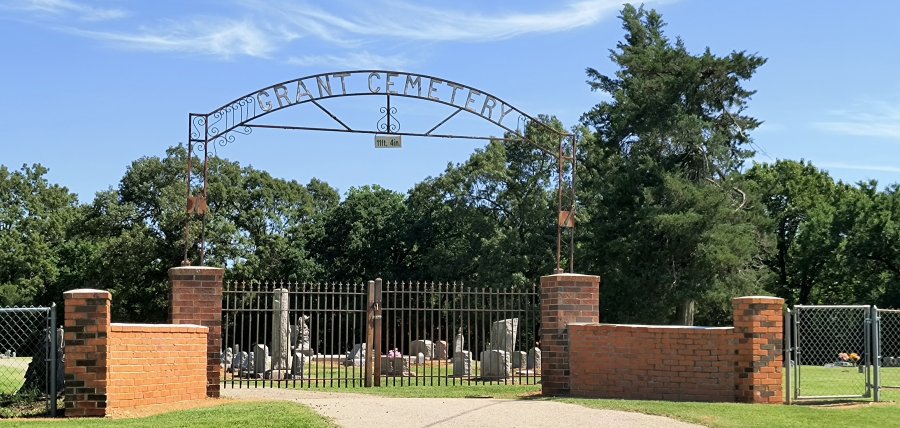
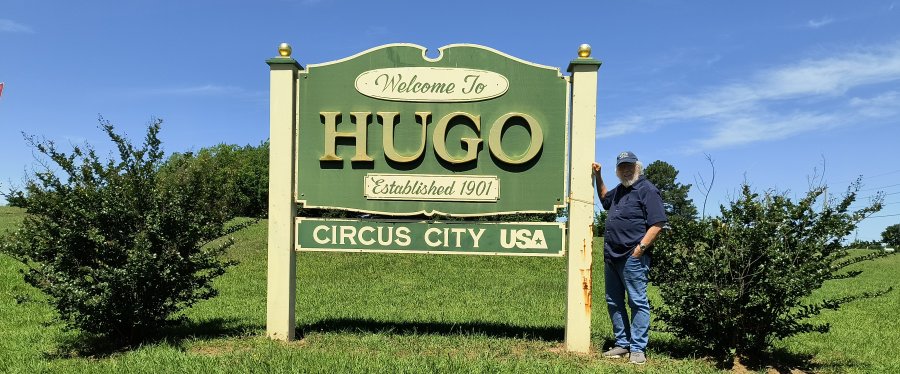
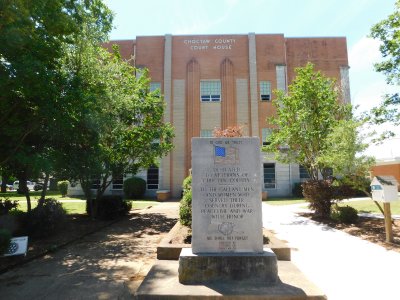
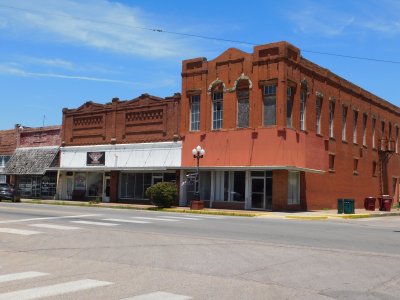
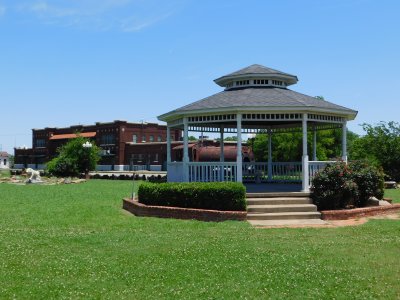
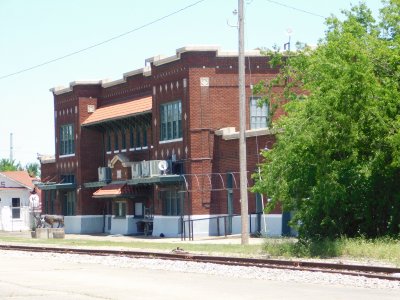
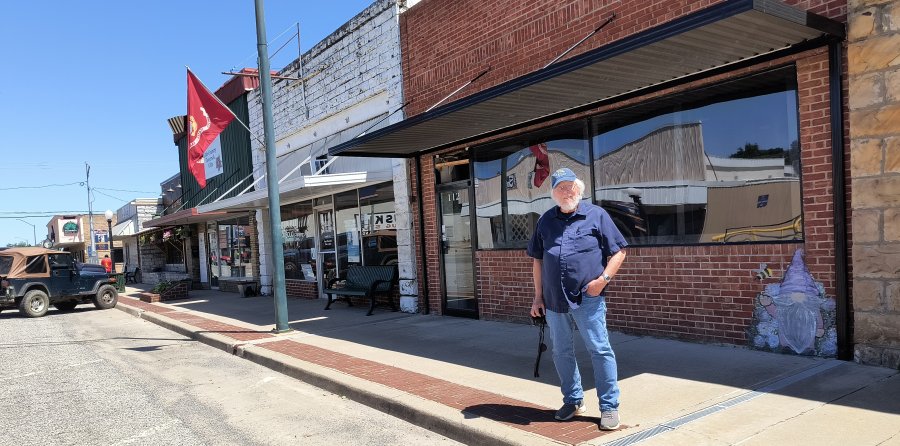
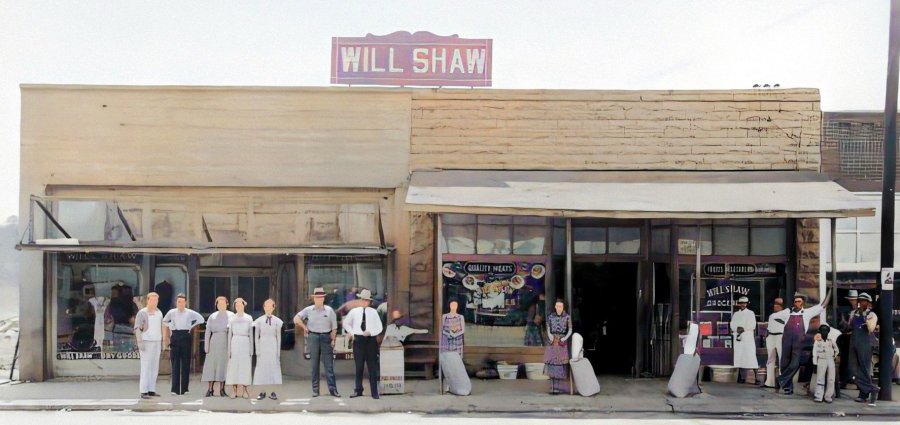
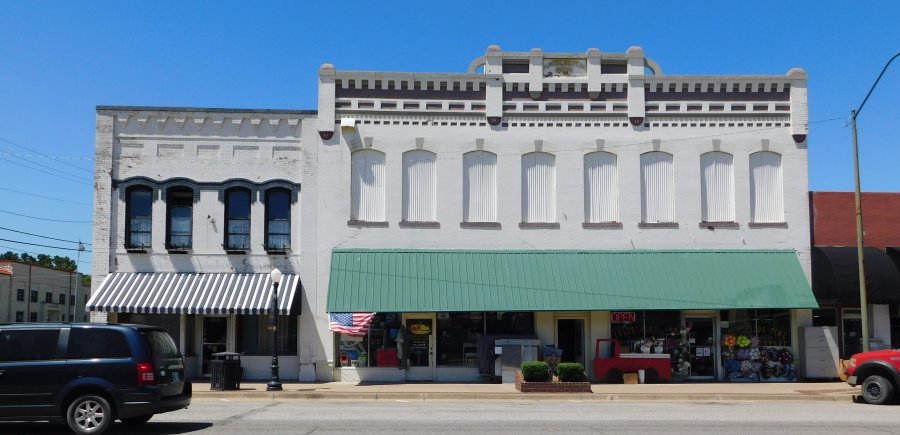
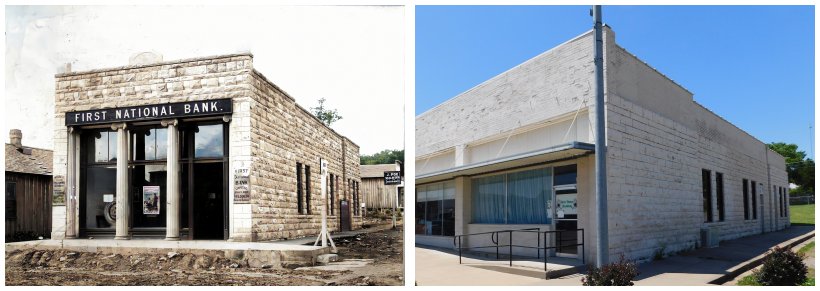
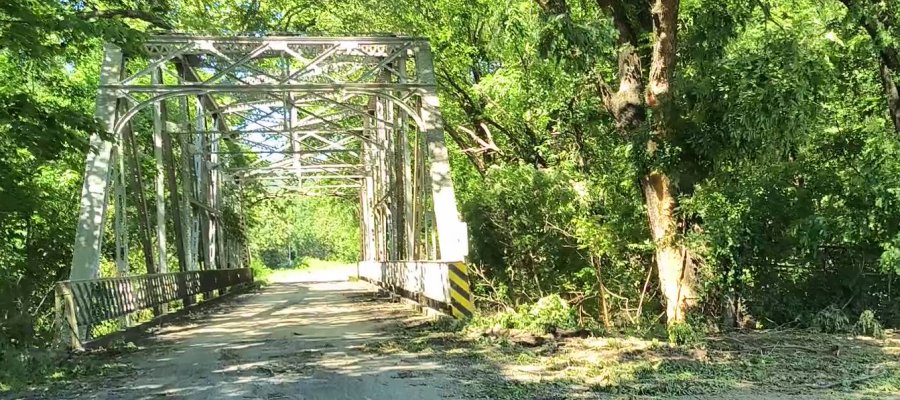
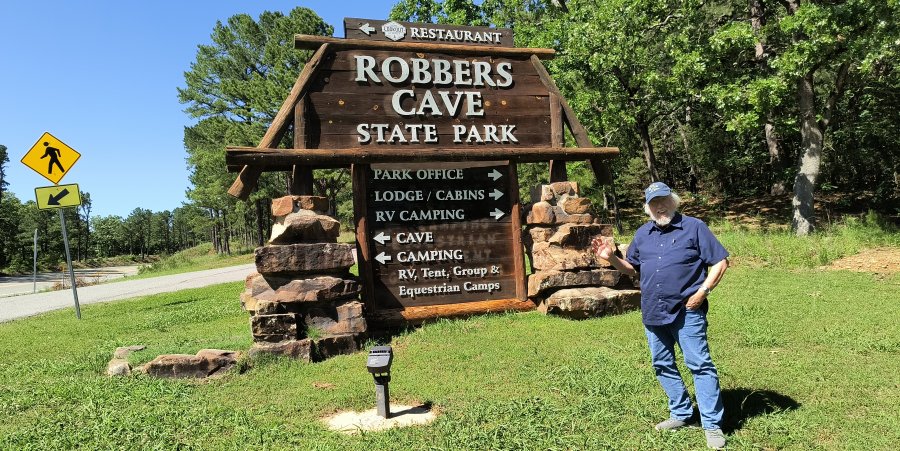
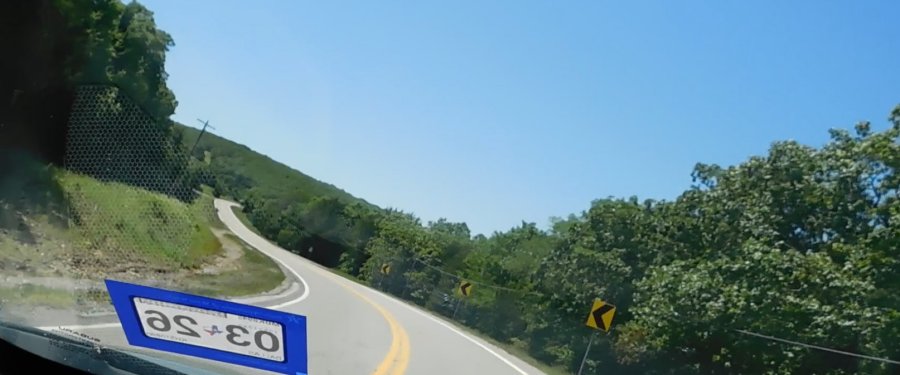
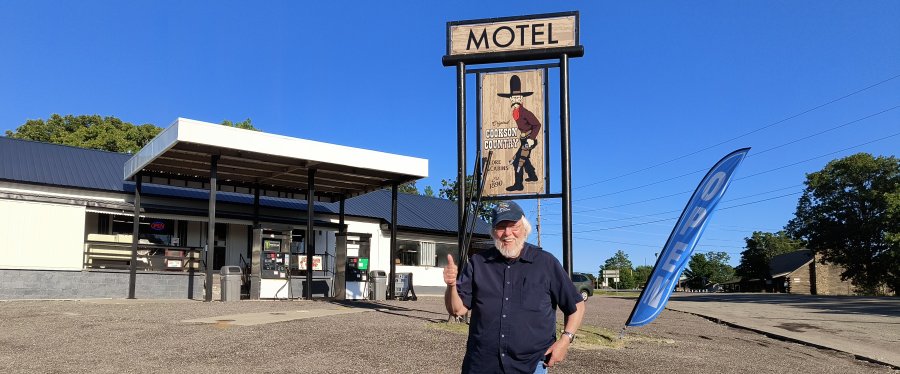

 On the way to Muskogee, I mused about Uncle Jack's bicycle trip. According to a story in the Muskogee Daily Phoenix, The boys had left Dallas on Thursday, June 30, at 1:30 p.m. By nightfall, they had reached Atoka, a distance of 126 miles, where they spent the night by the side of the road, and reached Muskogee by Friday (another 110 miles). After visiting Jack's step-grandmother's sister and family in Muskogee, at 8:45 p.m. they went on, in the dark, to the Sequoyah Indian School a few miles past Fort Gibson (which I passed on my way to Muskogee), and near where Jack and his friends spent Friday night, sleeping by the side of the road. They got up early on Saturday and went on to Cookson. After admiring the cliffs, they went back to Muskogee. Round trip to/from Muskogee to Cookson's Bend is about 80 miles. According to the newspaper report, they left Muskogeee at noon on Sunday, July 3, and arrived back in Dallas in the morning of the 4th, which seems nothing short of incredible!
On the way to Muskogee, I mused about Uncle Jack's bicycle trip. According to a story in the Muskogee Daily Phoenix, The boys had left Dallas on Thursday, June 30, at 1:30 p.m. By nightfall, they had reached Atoka, a distance of 126 miles, where they spent the night by the side of the road, and reached Muskogee by Friday (another 110 miles). After visiting Jack's step-grandmother's sister and family in Muskogee, at 8:45 p.m. they went on, in the dark, to the Sequoyah Indian School a few miles past Fort Gibson (which I passed on my way to Muskogee), and near where Jack and his friends spent Friday night, sleeping by the side of the road. They got up early on Saturday and went on to Cookson. After admiring the cliffs, they went back to Muskogee. Round trip to/from Muskogee to Cookson's Bend is about 80 miles. According to the newspaper report, they left Muskogeee at noon on Sunday, July 3, and arrived back in Dallas in the morning of the 4th, which seems nothing short of incredible!